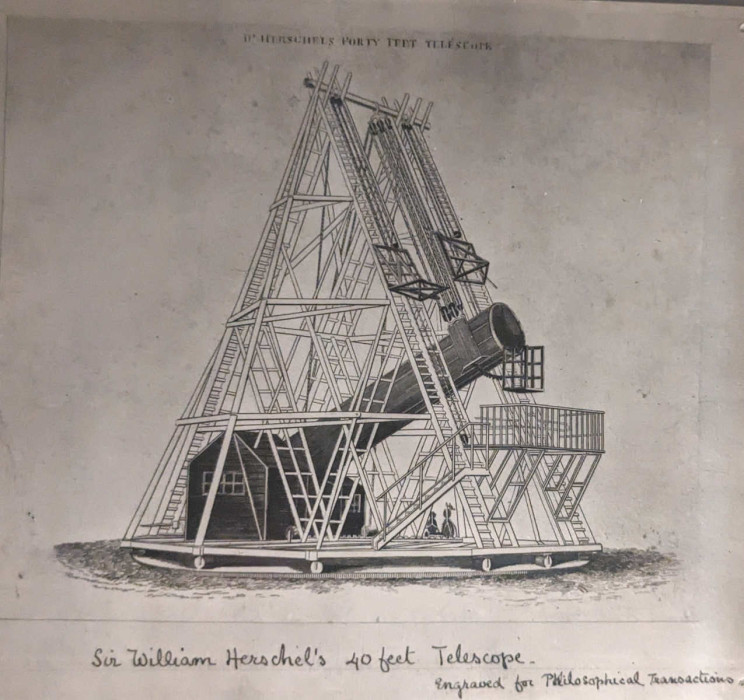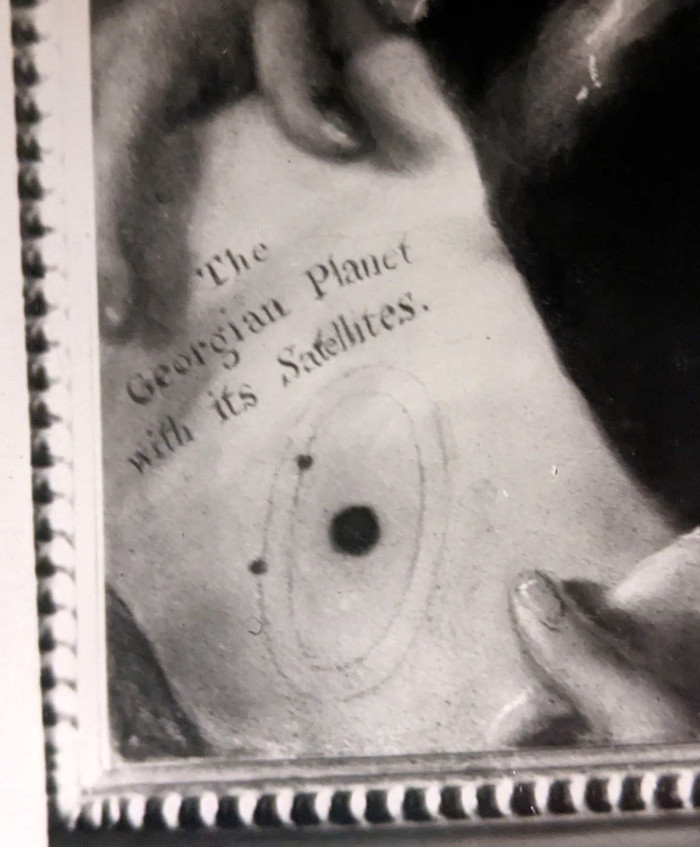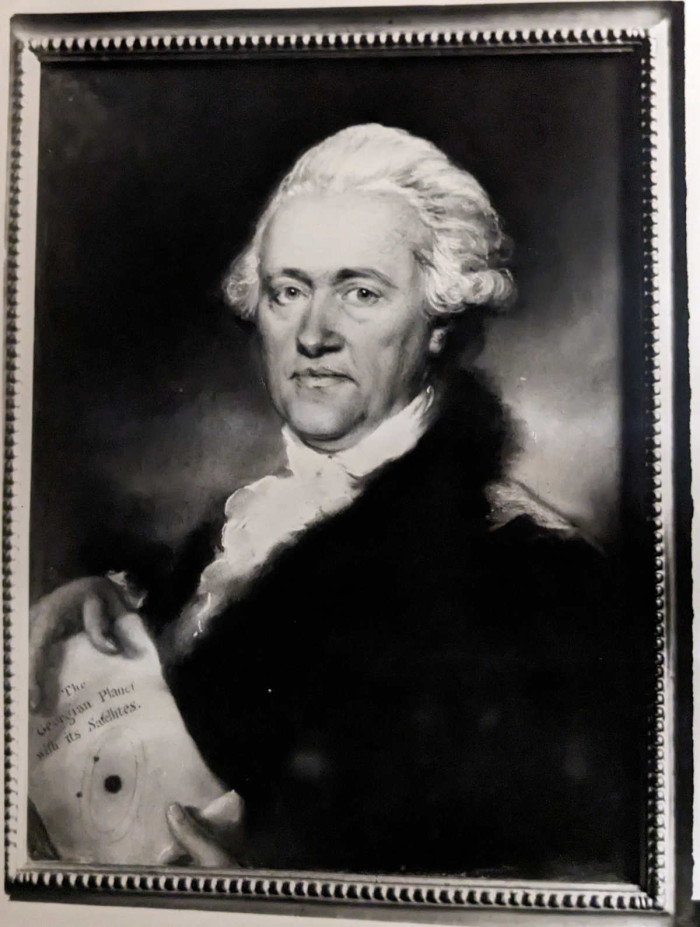On 13th March 1781, Frederick William Herschel discovered Uranus. He had constructed his own telescope (a drawing of which can be seen below ref. WI/D167) to view and survey the night sky and initially thought it was a comet. However he realised that it was much more than that - it was a planet.

Herschel planned to name the planet after King George III, but it was named Uranus after the Greek God of the Sky. This did not stop Sir William from calling it the 'Georgian Planet' as can be seen in this close up from a photograph of a portrait of Herschel (see full image below ref. WI/D151).

Herschel became famous for his discovery as it was the first planet to be discovered since ancient times. The King gave Herschel a Knighthood and made him the King's Astronomer. He was also awarded the Copley Medal by the Royal Society and began investigating nebulae - interstellar clouds of gas or dust.

Sir William was born in Germany and came to England in c.1757. He was an amateur astronomer at the time but was actually employed for his musical abilities. He played numerous instruments having played violin in Newcastle and the organ in Halifax. He later became the organist at the Octagon Chapel in Bath. It was whilst living in Bath with his sister Caroline, that he made his famous discovery of the planet Uranus. The house is now the Herschel Museum of Astronomy.
Later Sir William and Caroline moved to the South East living in areas of Berkshire such as Windsor and Slough (then part of Buckinghamshire). He actually settled in Slough living at Observatory House with his sister as his 'astronomical assistant'. However Caroline also gained a reputation for her own astronomical discoveries and received various awards for her work.
Sir William married Mary Pitt (neé Bladwin) in 1788 and their son John Herschel would later continue in the astronomy field and became known for his work in natural philosophy and photography. Sir William died in Slough in 1822 and his family are well known and remembered there.
Whilst we do not have records of Sir William Herschel here, we do have photographic copies of paintings and drawings amongst the Windsor Borough Collection under references WI/D151 and D167. It is quite fascinating to consider how such discoveries were made using what could be considered fairly primitive equipment today.
